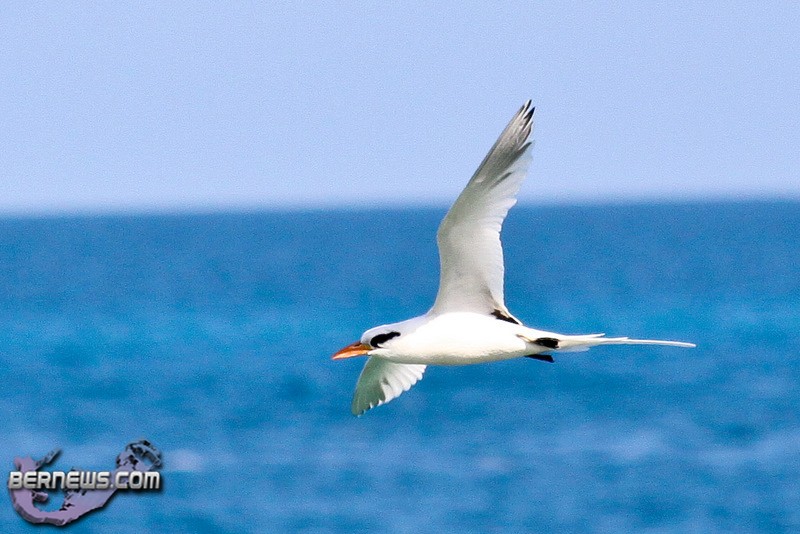Longtails Spotted Off Spittal Pond, Church Bay
The first Longtails of the year are back, according to President of the Bermuda Audubon Society Andrew Dobson, who said that Audubon member Keith Rossiter spotted two off Spittal Pond, and also noted they were seen off Church Bay.
Speaking previously, Mr. Dobson said: “Small numbers of longtails are usually seen in the early part of February but the majority do not return until March or April. These birds have been spending the winter on tropical waters to our south. They only come ashore to breed, each pair laying a single egg.”
“Bermuda is a very important breeding location for the White-tailed Tropicbird (longtail) with as many as 2,000 pairs returning to our shores each summer. Over the years, cliff nesting sites have been lost due to housing and commercial developments, not to mention cliff collapse due to severe storms.
“The natural cliff cavities in which longtails nest can take hundreds of years to form. The Audubon Society has initiated a successful programme of artificial nest ‘igloos’ for longtails. Hundreds of these have been installed on appropriate sites around Bermuda.”
Late last year, the Department of Conservation Services said they have become “increasingly concerned about the impact that crows are having on Bermuda’s iconic Longtail.”
The Department said they have long recognized that this predator has always taken small numbers of Longtail eggs, usually from more open nests.
However in 2009 the Department noticed a worrisome change in behaviour when over 50 Longtail egg remains were found on the Castle Point property at the end of the Tucker’s Town peninsula.
After an investigation if was found that all these eggs had been taken by one small group of 4 crows. Further to this a group of crows were observed a number of times with downy Longtail chicks in their beaks, which were then killed and eaten.
Consequently, efforts were undertaken to reduce this problem by Pest Control Officers, who were able to remove 3 of these crows.
“At this time the problem is location-specific due to the relatively narrow concentrations of Longtails in specific nesting areas and because Crows are territorial,” explained Director of Conservation Services Drew Pettit. “However the great concern is that the problem could potentially grow quickly.”
- File photos
Read More About
Category: All, Environment




Such a beautiful bird…….
Seeing longtails always makes me happy
Welcome home bird….spring is next!!!